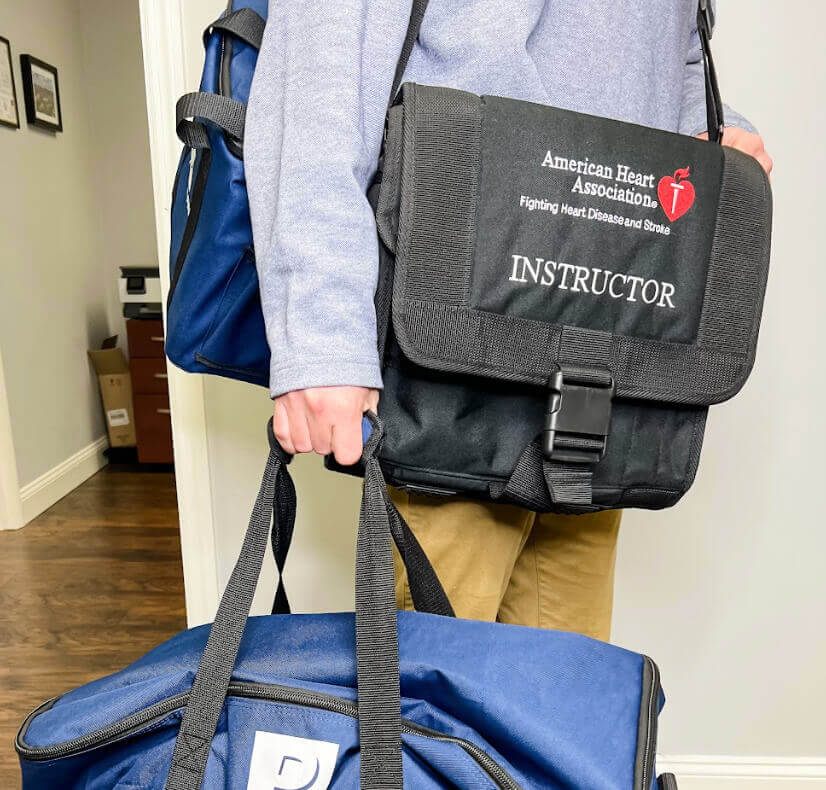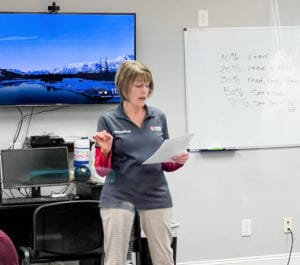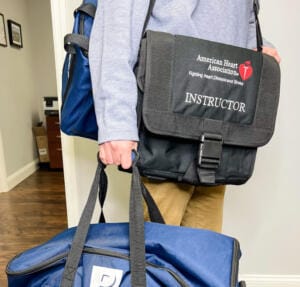Difference Between BLS Instructor vs. HeartSaver Instructor

Are you trying to discern the difference between a BLS instructor and Heartsaver instructor? There are all kinds of medical certifications out there and understanding the differences between them all can be tricky. Usually, every certification has its own requirements, curriculum, and materials. Today, we will be explaining the differences between American Heart Association (AHA) BLS Vs. Heartsaver Instructors.
If you are looking to understand the difference between provider level BLS v Heartsaver classes you can read here.
What Is a BLS Instructor? 
BLS stands for Basic Life Support. The course is designed and required for current healthcare providers like nurses, EMTs, first responders, and other healthcare practitioners. It’s also designed for those who are currently undergoing medical training. The AHA BLS course teaches one and two-person CPR/AED skills for adults, children, and infants while using various breathing barrier devices. Like the HeartSaver course, it also includes learning the use of an Automated External Defibrillator (AED).
The American Heart Association does not require BLS instructors to have a medical background. However, BLS Instructors are given the highest training of any CPR instructors and can teach various courses including the HeartSaver courses which we’ll discuss later.
The prerequisites to become an AHA BLS instructor are the following:
- Current American Heart Association BLS Provider certification card.
- Completion of the AHA BLS Instructor Essentials Online training.
- Attendance of an AHA BLS instructor course.
- Be monitored teaching your first class.
In addition to these prerequisites, you’ll also need the following course materials to complete the instructor training successfully:
- AHA BLS Provider Instructor Manual.
- AHA BLS Provider Student Manual.
- AHA BLS Provider Course Video.
If you also want to teach HeartSaver CPR and First Aid programs, you’ll need the course materials for the HeartSaver course as well.
Upon completion of your BLS Instructor course, a certification card will be issued, which is valid for two years. This certification counts as provider certification as well, if needed for your work or employment.
The average cost for an AHA instructor course is about $300-500 depending on your location. To renew your certification, you’ll have to have met the minimum number of courses taught (usually 4 classes in 2 years) and be monitored by your Training Center teaching a course. Another option to renew, is to retake the instructor class.
 What Is a HeartSaver Instructor?
What Is a HeartSaver Instructor?
The American Heart Association (AHA) HeartSaver course and CPR guidelines are very similar to the AHA BLS course. However, the Heartsaver course does not cover the more advanced and team skill techniques that healthcare providers may use. As such, it’s aimed at those people who are not in the healthcare field but do require CPR training for their job. To offer classes to these people, HeartSaver instructors need to complete a HeartSaver Instructor course.
The prerequisites to becoming an AHA Heartsaver instructor are:
- Current American Heart Association AHA HeartSaver Adult, Child, Infant CPR, and First Aid certification card. (must include First Aid)
- Completion of the online AHA HeartSaver Instructor Essentials course.
- Attendance of a HeartSaver instructor course.
- Be monitored teaching your first class.
In addition to these prerequisites, you’ll also need the following course materials to become an instructor:
- HeartSaver First Aid CPR/AED Instructor Manual.
- HeartSaver First Aid CPR/AED Course Video.
- HeartSaver First Aid CPR/AED Student Manual.
On course completion, an instructor certification card will be issued and is valid for two years.
The average cost for an AHA Heartsaver Instructor course is usually $300-500. To renew your instructor certification, you will need to teach a minimum of 4 classes in 2 years (or more if your Training Center requires) and be monitored teaching at least one of them. Another option to renew your instructor certification is to take another instructor course. This may be required if you don’t meet the requirements to renew.
The Key Differences Between Both
While both courses feature much of the same content and CPR guidelines, the difference between the courses are the following:
- The BLS course teaches more advanced techniques and skills. You don’t need a medical background to teach BLS, but you will primarily be teaching others who do have a medical background.
- While the BLS course is developed for healthcare providers, HeartSaver courses are meant for people who are not healthcare professionals but need the certification for their job.
- BLS focuses on two-rescuer scenarios and team-based approach resuscitation. Whereas, HeartSaver is focused on one-rescuer community resuscitation.
- In addition to covering the basics, BLS will also discuss rescue breathing, using advanced airways, and how to use a bag mask device which are not covered in HeartSaver.
- HeartSaver teaches First Aid as an option module, whereas BLS only teaches CPR.
Frequently Asked Questions
We’ve compiled a list of common questions people often ask in respect of these certifications.
What is specifically taught in HeartSaver?
The HeartSaver course will teach the basic care necessary in emergencies. As such, it teaches CPR techniques, relief of choking, and the use of an AED.
What is specifically taught in BLS?
The BLS course will teach the skills necessary to recognize and respond to life-threatening emergencies. As such, it teaches advanced interventions in emergencies like respiratory and cardiac arrest, strokes, and other life-threatening health issues.
Does HeartSaver meet OSHA standards?
The American Heart Association HeartSaver course is designed to comply with OSHA requirements.
Is BLS meant for anyone?
In general, the BLS course is designed for healthcare providers, but anyone can enroll in and complete the BLS course. Some occupations that don’t have a medical background may be required to have this higher level of CPR to assist in team rescue responses, such as Lifeguards, first responders, or nursing home staff.
Where can I sign up for a class?
You can view our calendar to find upcoming AHA BLS and HeartSaver instructor courses in your area. If we do not offer classes in your location, you can search on ClassEagle.com to find an instructor near you.
If you have any questions, please don’t hesitate to contact us.

